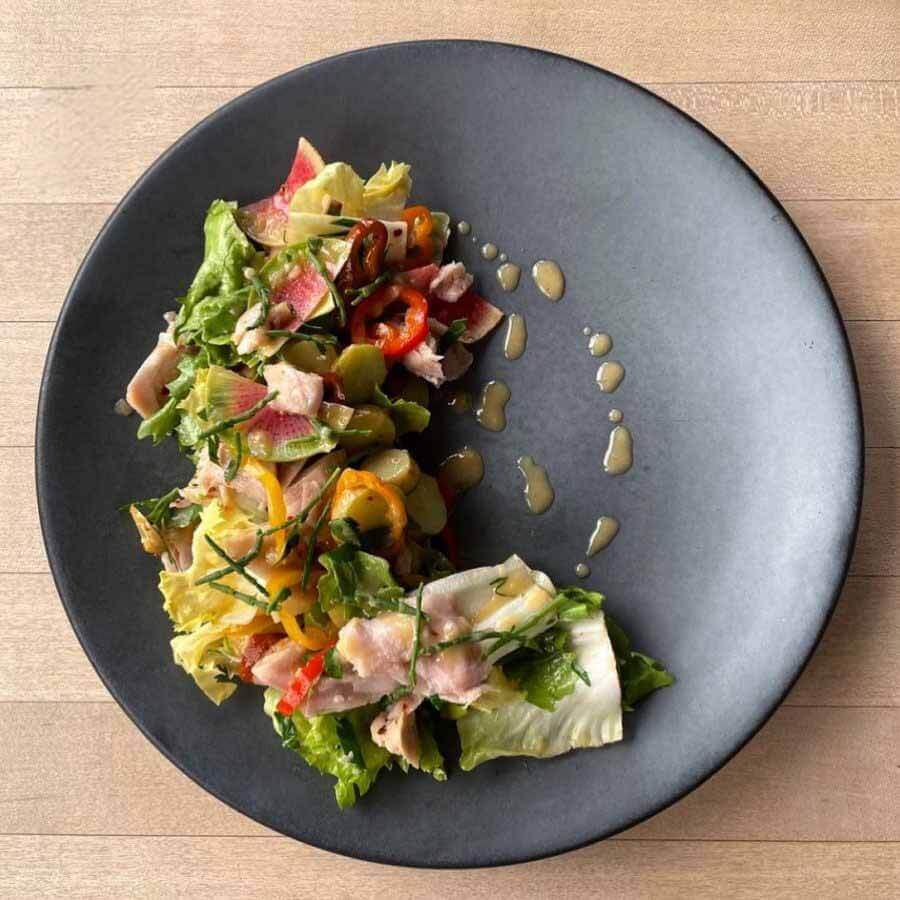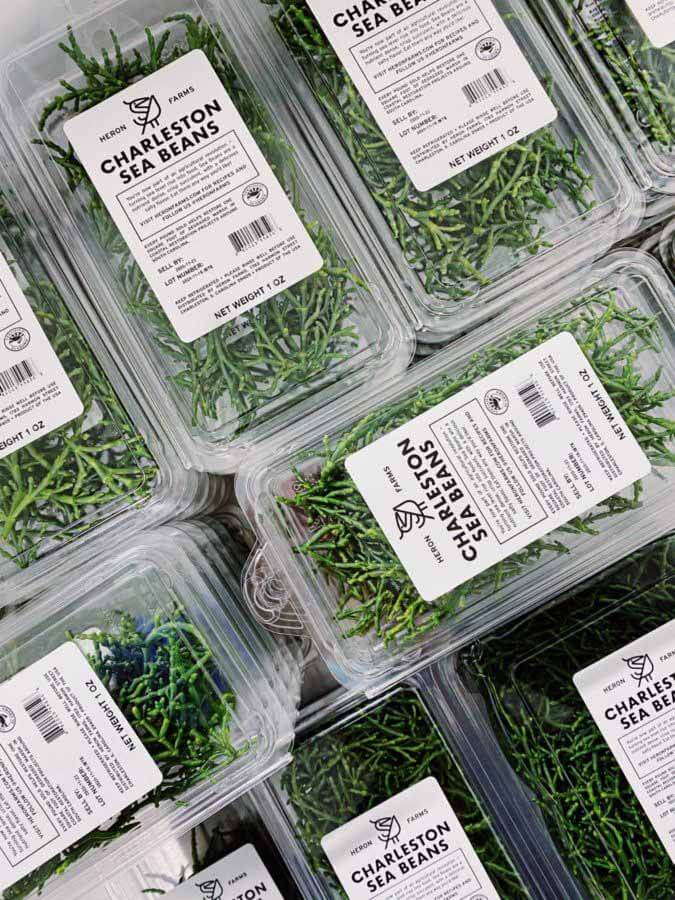Salicornia has been called so many names over the years, I think it might need therapy. Crow’s foot greens, sea asparagus, sea pickle, pickleweed, samphire, glasswort, saltwort … I mean, give this kid a break. Jokes aside, you might know the strange plant as a sea bean. It looks a lot like a little bright-green stalk with mini asparagus-like branches. This humble succulent is garnering waves of attention from foodies and chefs; environmentalists and scientists in Charleston, South Carolina and beyond, because one man, Sam Norton, farms it indoors and replants it outdoors to restore the Lowcountry’s rising water levels.

Now in his late 20s, Sam grew up eating the crunchy plant straight from the marshes in Isle of Palms, South Carolina. While studying biology at the College of Charleston, he reconnected to the sea bean and became enthralled with its restorative capabilities. “I started Heron Farms in 2018 as a research concept that quickly became commercialized,” Sam says. He built the world’s first and only indoor hydroponic farm producing food using ocean water — the world’s largest resource to produce food.
RELATED: Sweetgrass Baskets: Your Guide to the Woven Wonders of the Lowcountry

“We are growing food with Earth’s most abundant resource while also restoring degraded saltmarsh,” Sam says. “For restoration, Salicornia is the most saltwater-tolerant plant and can extract salt from the soil. This heals the land and makes it suitable for less salt-tolerant plants to come in and thrive.” Heron Farms restores the marshes of the Lowcountry and, interestingly, in Bangladesh. For every pound of sea beans they sell, they plant one square foot of marshes.

Charleston is perfectly suited for the environmental plus sides of Salicornia, but it also reaps another benefit of the sea bean: its deliciousness. Firm in texture, slightly salty in flavor, and vibrant in color, it’s no wonder why gastronomers across Charleston are adding Heron Farms’ sea beans to salads and seafood left and right. Bartenders and brewers are even incorporating it into cocktails and limited-edition beers. In Europe, they cook it with olive oil and garlic and serve it as a side in the summer.
The sea bean became a “delicacy” primarily because of its short growing season, but Sam and his team now farm it year-round indoors. “We are able to use a largely abundant resource to grow food. We can also perfect the flavor and texture of sea beans by growing it indoors.”

This sea veggie’s got some good health benefits, too.”The micronutrients contained in seawater have many nutritional benefits,” Sam explains. Loaded with minerals and rich in vitamins A, B1, B15, C, and D, it is also known to boost the immune system. Sailors used to take the snack with them to fight diseases on long trips. These purifying effects and the local abundance that Heron Farms has created have put this little sea bean in the spotlight and made it available nationwide. You can buy an eight-ounce container for $28 or a pound for $48 online, and the farm gives restaurants wholesale pricing.
RELATED: The Top 5 Health & Wellness Trends for 2021
Heron Farms is not only interested in growing the sea bean. “It is our first product but not our final one,” Sam says. “We plan to double the production capacity of our current grow room in the first half of [2021] and start the build-out of our second farm in the Northeastern U.S.” Visit Heron Farms’ fabulously informative Facebook and Instagram to learn more about their sea bean operation and upcoming programming. And next time you’re in Charleston, keep an eye out for the bright-green sea bean … it’s both the scrumptious crunch atop your raw oyster AND the thing helping to restore the magnificent marsh around you. And that, my friends, is where science meets magic.
Thanks to Sam and the Heron Farms team for sharing this endeavor with us. All photos courtesy of Heron Farms unless otherwise noted.
**********
Sign up for your best “me moment” of the day. Subscribe to StyleBlueprint.



















